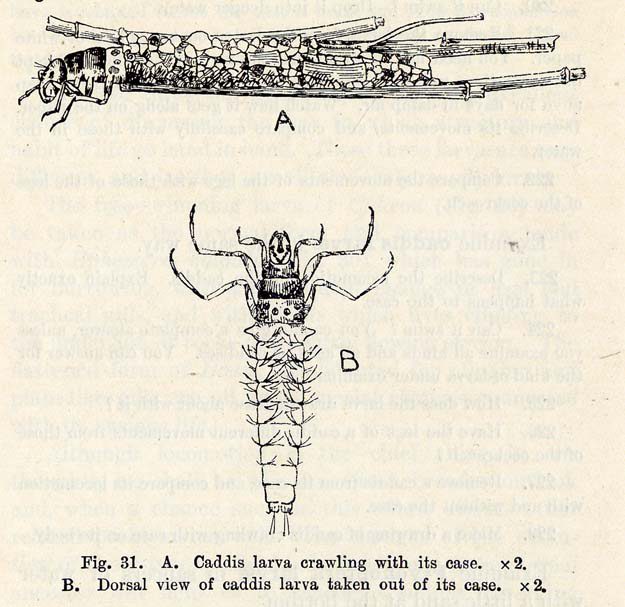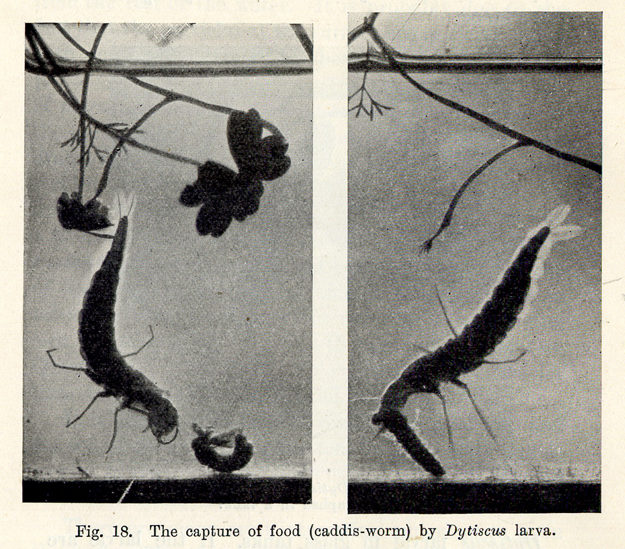Ernest E. Unwin, Pond problems, The Cambridge nature study series, Cambridge University Press, (1914), 1934, pp. 49-50.
A new invention
Examine some Caddis larvae in a saucer of water.
141. Describe the case-its shape, materials, dors. Pull an empty case to pieces, and describe its construction.
142. Draw side view of case, and the front and back doors.
143. Remove a larva from its case. This is most easily done by gently inserting a pin through the back door. This will make the larva begin to crawl out of the case, and with a little encouragement from the pin point and a push from the pin head most larvae can be dislodged. But don’t try to pull it out.
Examine the caseless larva, and describe its general structures.
144. Make a drawing of larva from above. Colour it.
145. Has the colour any connection with living in a case ? Watch one in its case before answering this.
146. Can you see anything along the sides of its body or on its back which you take to be tracheals gills ? Describe what you see.
147. If you haven’t represented these gills in your sketch, do so now.
148. How many gills are there, and how are they arranged ?
149. Can they more ? Is there any movement of the larva which will be useful in helping these gills to fulfil their purpose ? Watch the larva which is out of its case.
150. Remembering that the larva lives in a case, are there any special disadvatages in connection with its breathing ?
151. How does it get over them ?
152. Test the flow of water through the case of another specimen by means of powdered carmine or a little paint. Place a little coloured fluid first at one end of the case and then at the other. Which way does the water flow ? Why does it flow ? Describe the experiment and what it proves.
153. Can the larva keep a current of water flowing through the case when its head and legs are out of the front door working at case building or hunting for food ? This will require careful observations to answer.
154. What will keep the body steady so that it can be thrown into waves and thereby keep a current of water flowing through the case ?
To answer this difficult question completely would require much time and much careful observation. It was solved in a very ingenious way by giving a caddis larva little pieces of thin glass or mica with which to build a case ; for if you turn a larva out of his case, he will at once begin to build another, and by restricting the materials you can get him to build of almost anything. You might try larvae in different saucers with beads, tea leaves, pieces of cork, india-rubber, chips of wood, paper. If you want to have your larva build a glass case which will let you see what he is doing, you must choose the larva called Phryganea grandis which builds a case with the leaves of a water plant carefully arranged like tile work. See Fig. 82(1) in Miall. If you succeed in this you will then be able to answer this question. You will also get some help by another examination of the larva. Direct your attention to the first abdominal segment, the one immediately after the sefment with the brown spots.

